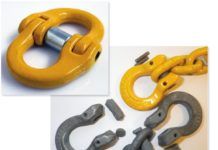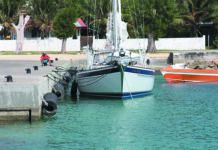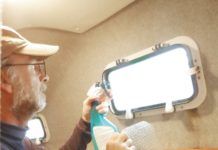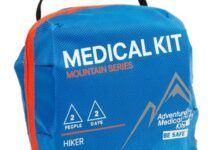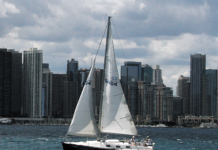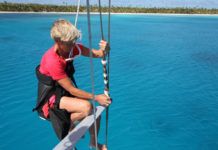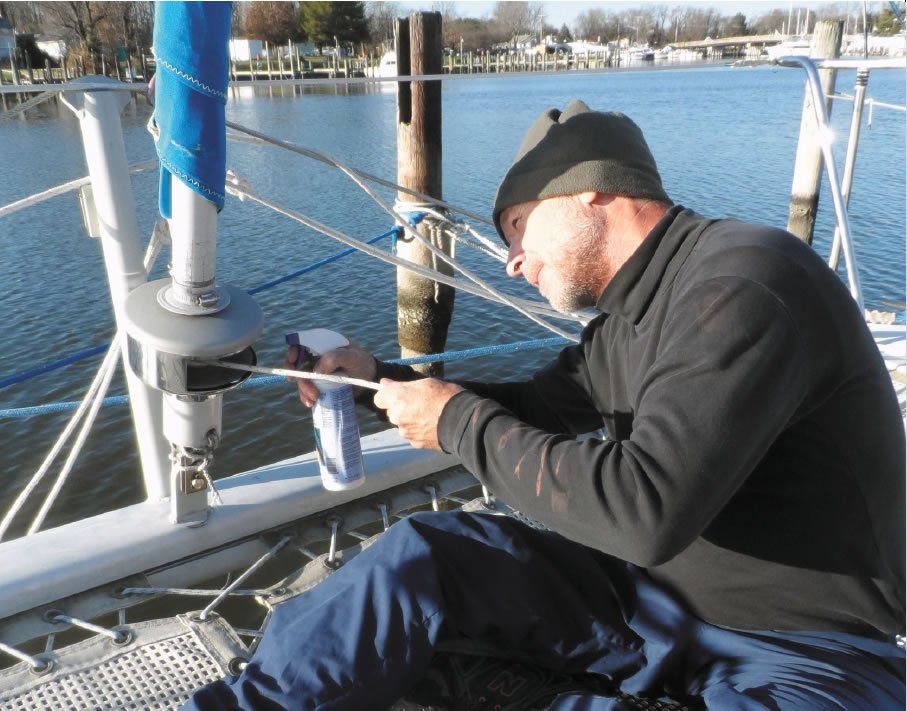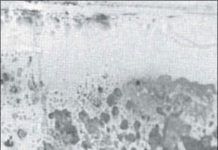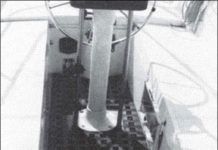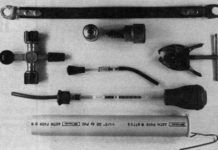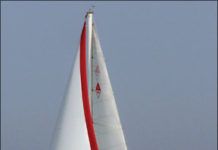How to Restore Teak Wood on Boats
Probably nothing can make or break the appearance of a fiberglass boat more quickly than the appearance of the exterior teak trim. Contrary to popular belief, teak is not a maintenance-free wood that can be safely ignored and neglected for years at a time. Though teak may not rot, it can check, warp, and look depressingly drab if not properly cared for.
Keels: Minor Maintenance and Repair
The best way to treat an iron keel that’s rusting is to sandblast the whole thing and apply a complete, new, epoxy-based coating system. But that’s not always feasible or desirable. Because of the mess involved, many boat yards do not allow sandblasting. Even when this is permissable, a complete recoating job also means a complete re-fairing job, and that in turn means lots and lots and lots of slow, boring, dirty work if anything approaching a proper, smooth foil is to be achieved.
Two Ways to Build a Teak Cockpit Grating
A snug-fitting teak grating adds safety and a touch of class to the cockpit of any boat. Spray or rain runs under the grating to the cockpit drains, leaving a reasonably dry footing for hopping about the cockpit as you haul in sheets to tack or trim sails. Unfortunately, you can't buy a grating off the shelf to fit your boat, and having a grating custom-built can be a costly and nerve-wracking experience. The solution to both of these problems: build your own grating. Its a fun job that can keep you busy for a few winter evenings, and you can build it for less than one-third the cost of a custom-built job.
Battery Care Pays Off
Among the more neglected pieces of gear aboard most boats are the primary storage batteries, which faithfully crank the engine and light the lights. In the case of the typical lead-acid battery, even benign neglect is tantamount to abuse. It’s small wonder that many battery manufacturers refuse to recognize the warranty on batteries used aboard boats. The normal marine battery cycling - relatively high discharge rates with no charging, followed by rapid charging at a high rate by high-output alternators - is murder on conventional automotive batteries, and not exactly a piece of cake even for deep cycle batteries, constructed to absorb this type of abuse.
Maintaining Your Boat’s Electrical System
The battery is the heart of a boat’s 12-volt electrical system. In it, a chemical reaction maintains a potential difference or voltage, which “pumps” or pushes electrons around whichever circuits are switched on or are “closed.” No charges should flow through an “open” or incomplete circuit; if they do, you’ve got a problem, which we’ll get to later. The storage battery’s chemical reaction is reversible, which means that it can be recharged, and will be continuously, as long as the engine is running and the alternator or generator is functioning properly.
Maintaining Your Boats Electrical System
The battery is the heart of a boat’s 12-volt electrical system. In it, a chemical reaction maintains a potential difference or voltage, which “pumps” or pushes electrons around whichever circuits are switched on or are “closed.” No charges should flow through an “open” or incomplete circuit; if they do, you’ve got a problem, which we’ll get to later. The storage battery’s chemical reaction is reversible, which means that it can be recharged, and will be continuously, as long as the engine is running and the alternator or generator is functioning properly.
Are Mildew Preventers the Best Defense?
In January 2009, Practical Sailor tested 14 mold and mildew cleaners, and two household products stood out: the super-chlorinated Klean-Strip Mildew Stain Remover and Spray Nine, a chlorine-free household cleaner. After that test, several readers asked about products to prevent mold. One product in particular, Concrobium Mold Control, was repeatedly suggested for testing. We found Concrobium at Home Depot, and to make things interesting, we included two other mildew preventers that readers suggested: 3M Marine Mildew Block, a treatment formulated to follow the 3M Mildew Cleaner tested in January, and Mold Off, a product billed as an eco-friendly commercial-grade cleaner and protectant.
Backyard Boatbuilding: A Father-Son Odyssey
For many sailors, boatbuilding can be the ultimate do-it-yourself project. The skills derived pay off as extra dividends when it comes to repairs or fitting out projects aboard larger sailboats. And as Matt Zephry and his 12-year-old son Alex found out, sharing the boatbuilding process with a loved one is like passing along an important piece of family history. The father-son duo began their boatbuilding project without any plans. Their intention was to create a boat that was easy to row and could double as a sailing skiff for father-and-son fishing trips. Their dream boat-and first boatbuilding project-was a success, and the Z&S team launched Odyssey in time for a Fathers Day sail.
Mailport: June 2010
The June 2010 issue featured letters on subjects such as: spiders, addition of color to handheld electronics, DIY boatyard recommendation and propane fridges.
Mailport: April 2010
Letters to Practical Sailor's April 2010 issue include: MOB drills, tethers, nav lights, cleats, no-buff shines and tankless water heaters.











